Description
CHAPTER ONE
Introduction to Investing and Valuation
Concept Questions
C1.1. Fundamental risk arises from the inherent risk in the business – from sales revenue falling or expenses rising unexpectedly, for example. Price risk is the risk of prices deviating from fundamental value. Prices are subject to fundamental risk, but can move away from fundamental value, irrespective of outcomes in the fundamentals. When an investor buys a stock, she takes on fundamental risk – the stock price could drop because the firm’s operations don’t meet expectations – but she also runs the (price) risk of buying a stock that is overpriced or selling a stock that is underpriced. Chapter 19 elaborates and Figure 19.5 (in Chapter 19) gives a display.
C1.2. A beta technology measures the risk of an investment and the required return that the risk requires. The capital asset pricing model (CAPM) is a beta technology; is measures risk (beta) and the required return for the beta. An alpha technology involves techniques that identify mispriced stocks than can earn a return in excess of the required return (an alpha return). See Box 1.1. The appendix to Chapter 3 elaborates on beta technologies.
C1.3. This statement is based on a statistical average from the historical data: The return on stocks in the U.S. and many other countries during the twentieth century was higher than that for bonds, even though there were periods when bonds performed better than stocks. So, the argument goes, if one holds stocks long enough, one earns the higher return. However, it is dangerous making predictions from historical averages when risky investment is involved. Averages from the past are not guaranteed in the future. After all, the equity premium is a reward for risk, and risk means that the investor can get hit (with no guarantee of always getting a higher return). The investor who holds stocks (for retirement, for example) may well find that her stocks have fallen when she comes to liquidate them. Indeed, for the past 5-year period, the past 10-year period, and the past 25-year period up to 2010, bonds outperformed stocks—not very pleasant for the post war baby-boomer at retirement age at that point who had held “stocks for the long run.” Waiting for the “long-run” may take a lot of time (and “in the long run we are all dead”).
The historical average return for equities is based on buying stocks at different times, and averages out “buying high” and “buying low” (and selling high and selling low). An investor who buys when prices are high (or is forced to sell when prices are low) may not receive the typical average return. Consider investors who purchased shares during the stock market bubble in the 1990s: They lost considerable amount of their retirement “nest egg” over the next few years. See Box 1.1.
C1.4. A passive investor does not investigate the price at which he buys an investment. He assumes that the investment is fairly (efficiently) priced and that he will earn the normal return for the risk he takes on. The active investor investigates whether the investment is efficiently priced. He looks for mispriced investments that can earn a return in excess of the normal return. See Box 1.1.
C1.5. This is not an easy question at this stage. It will be answered in full as theproceeds. But one way to think about it is as follows: If an investor expects to earn 10% on her investment in a stock, then earnings/price should be 10% and price/earnings should be 10. Any return above this would be considered “high” and any return below it “low.” So a P/E of 33 (an E/P yield of 3.03%) would be considered high and a P/E of 8 (an E/P yield of 12.5%) would be considered low. But we would have to also consider how accounting rules measure earnings: If accounting measures result in lower earnings (through high depreciation charges or the expensing of research and development expenditure, for example) then a normal P/E ratio might be higher than 10. And one also has to consider growth: If earnings are expected to be higher in the future than current earnings, the E/P ratio should be lower than this 10% benchmark (and the corresponding P/E higher). In early 2012, the S&P 500 P/E ratio stood at 14.4.
C1.6. The firm has to repurchase the stock at the market price, so the shareholder will get the same price from the firm as from another investor. But one should be wary of trading with insiders (the management) who might have more information about the firm’s prospects than outsiders (and might make stock repurchases when they consider the stock to be underpriced). Some argue that stock repurchases are indicative of good prospects for the firm that are not reflected in the market price, and firms repurchase stocks to signal these prospects. Firms buy stocks because they think the stock is cheap.
C1.7. Yes. Stocks would be efficiently priced at the agreed fundamental value and the market price would impound all the information that investors are using. Stock prices would change as new information arrived that revised the fundamental value. But that new information would be unpredictable beforehand. So changes in prices would also be unpredictable: stock prices would follow a “random walk.”
C1.8. Index investors buy a market index–the S&P 500, say–at its current price. With no one doing fundamental analysis, no one would have any idea of the real worth of stocks. Prices would wander aimlessly, like a “random walk.” A lone fundamental investor might have difficulty making money. He might discover that stocks are mispriced, but could not be sure that the price will ultimately return to “fundamental value.”
C1.9. a. If the market price, P, is efficient (in pricing intrinsic value) and V is a good measure of intrinsic value, the P/V ratio should be 1.0. The graph does show than the P/V ratio oscillates around 1.0 (at least up to the bubble years). However, there are deviations from 1.0. These deviations must either be mispricing (in P) that ultimately gets corrected so the ratio returns to 1.0, or a poor measure of V.
- Yes, you would have done well up to 1995 if P/V is an indication of mispricing. When the P/V ratio drops below 1.0, prices increase (as the market returns to fundamental value), and when the P/V ratio rises above 1.0, prices decrease (as the market returns to fundamental value). A long position in the first case and a short position in the latter case would earned positive returns. Of course, this strategy is only as good as the V measure used to estimate intrinsic value.
- Clearly, shorting Dow stocks during this period would have been very painful, even though the P/V ratio rose to well above 1.0. Up to 1999, the P/V ratio failed to revert back to 1.0 even though it deviated significantly from 1.0. This illustrates price risk in investing (see question C1.1 and Box 1.1). Clearly, buying stocks when the P/V ratio was at 1.2 would clearly involved a lot of price risk: The P/V ratio says stocks are too expensive and you’d be paying too much. But selling short at a P/V ratio of 1.2 in 1997 would also have borne considerable price risk, for the P/V ratio increase even further subsequently. In bubbles or periods of momentum investing, overpriced stocks get more overpriced, so taking a position in the hope that prices will return to fundamental value is risky. Only after the year 2000 did prices finally turn down, and the P/V ratio fell back towards 1.0.
Chapter 5 covers the calculation of P/V ratios here.

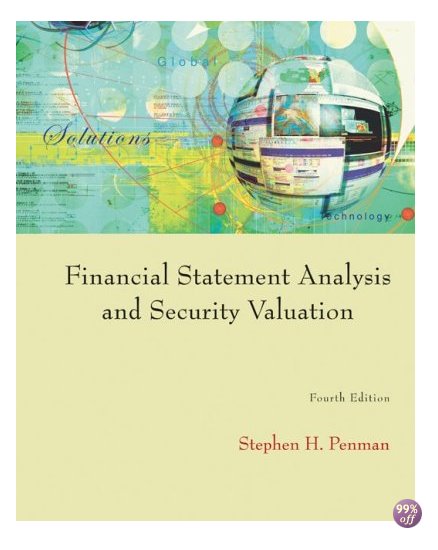
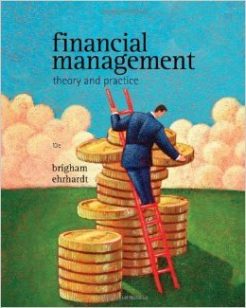
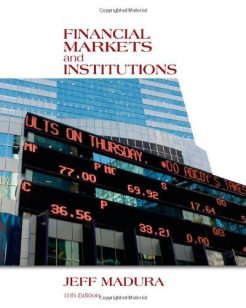
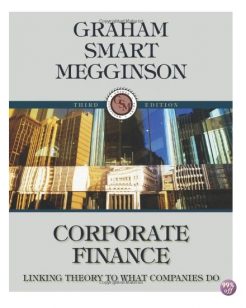
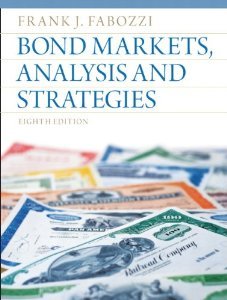

Reviews
There are no reviews yet.